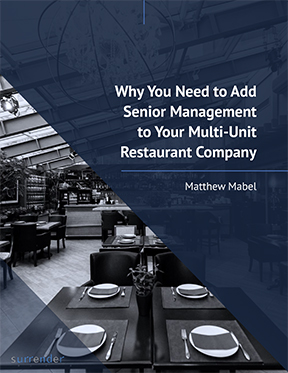
Here in Texas, a lot of people ask me why Café Express – which you can argue invented fast casual in 1984 – only operates four units when it used to be 15 or more and had aspirations of 100.
It’s simple: They didn’t keep up, either on culinary, branding, atmosphere, or service.
On the other hand, my fast casual clients are feeling confident.
They attract guests through the perception that there won’t be tipping and the promise to quickly move them on their way to their next obligation, either satisfied with a great meal or bringing one in branded packaging to their home or office.
But fast casual restaurants still have to provide an experience; without that, all the expensive, beautiful, branded packaging won’t help them sustain.
Oh, and they also must be great at all the basics of the industry: culture, marketing, branding, culinary, management, business, real estate, and education.
Focus on Guest Contact and Speed
The cashier in a fast casual (or, even worse, the tablet where the cashier used to be) typically remains a guest’s last meaningful contact with the restaurant.
That ought to make you nervous – because it leaves you with no chance to make something right at the table or to make your guests feel valued.
At two of my fast casual clients, we changed that so guests can expect a manager table visit just as they would expect in a full-service restaurant.
At one, the manager had previously stationed at expo to ensure consistency and standards.
Initially, they told me they did table visits, but those really only happened after a rush – in other words, when guests had already moved on to be at home or at work!
When we changed that, the spirit of hospitality and connecting with a guest became part of an overall program that lifted this company’s profit by 5 points.
I also have two fast casual clients who are having serious internal conversations about speed.
Speed remains the “fast” in “fast casual”; if you’re not delivering on that, you’re sunk vs. the competition.
So having habits and systems to ensure speed remains paramount.
These are the kind of problems I solve.
I see too many independent fast casuals with excuses for a couple of extra minutes of ticket times – minutes the chains they compete with don’t tolerate.
How do your fast casual operations rate in terms of guest contact and speed? What can you do to compete with the best in your segment so you get more than your fair share of the market?

